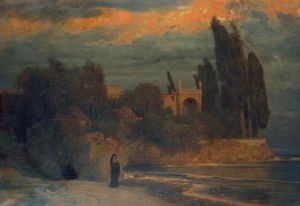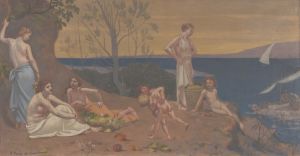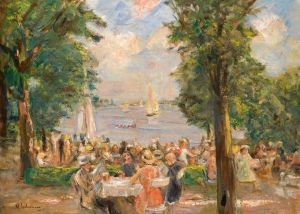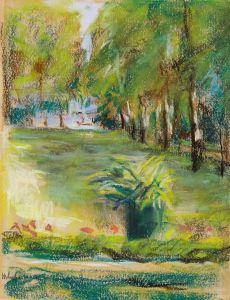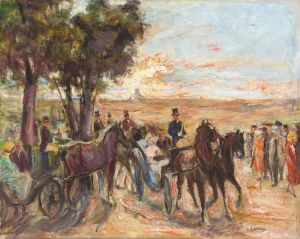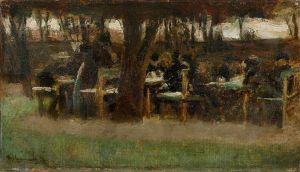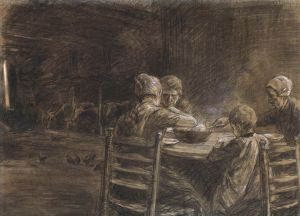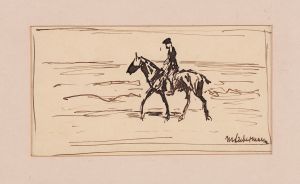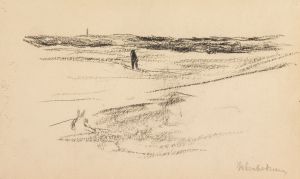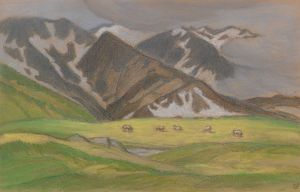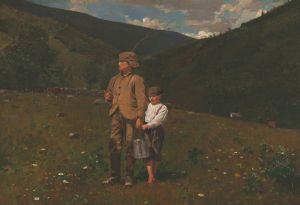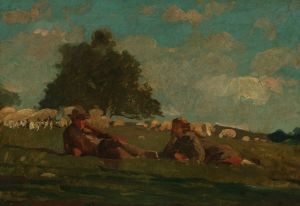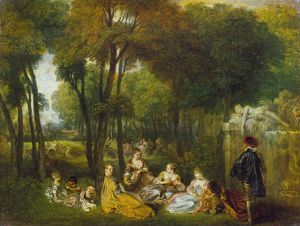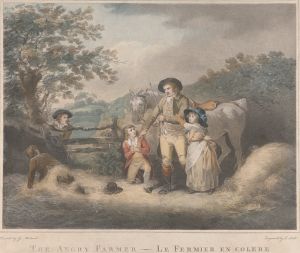
Wiese mit Vieh, vorne eine Kopfweide
A hand-painted replica of Max Liebermann’s masterpiece Wiese mit Vieh, vorne eine Kopfweide, meticulously crafted by professional artists to capture the true essence of the original. Each piece is created with museum-quality canvas and rare mineral pigments, carefully painted by experienced artists with delicate brushstrokes and rich, layered colors to perfectly recreate the texture of the original artwork. Unlike machine-printed reproductions, this hand-painted version brings the painting to life, infused with the artist’s emotions and skill in every stroke. Whether for personal collection or home decoration, it instantly elevates the artistic atmosphere of any space.
Max Liebermann was a prominent German painter and printmaker, known for his role in the development of Impressionism in Germany. One of his works, "Wiese mit Vieh, vorne eine Kopfweide" (translated as "Meadow with Cattle, a Pollard Willow in the Foreground"), exemplifies his interest in depicting rural and pastoral scenes, which was a common theme in his oeuvre.
Liebermann was born on July 20, 1847, in Berlin, into a wealthy Jewish family. He studied at the Weimar Art School and later in Paris, where he was influenced by the Barbizon School and the works of artists such as Jean-François Millet and Gustave Courbet. These influences are evident in his focus on naturalism and the everyday life of rural communities.
"Wiese mit Vieh, vorne eine Kopfweide" is a testament to Liebermann's skill in capturing the serene beauty of the countryside. The painting features a meadow with grazing cattle, a common subject in his work, reflecting his fascination with the simplicity and tranquility of rural life. The presence of a pollard willow in the foreground adds a distinctive element to the composition, showcasing Liebermann's attention to detail and his ability to integrate natural elements into his landscapes seamlessly.
Liebermann's technique in this painting, as in many of his works, demonstrates his adept use of light and color to create a sense of atmosphere and depth. His brushwork is characterized by loose, expressive strokes that convey movement and vitality, a hallmark of the Impressionist style. This approach allows the viewer to experience the scene as a fleeting moment in time, capturing the essence of the landscape and the life within it.
Throughout his career, Liebermann was a central figure in the Berlin Secession, an art movement that sought to break away from the conservative art establishment in Germany. He became the president of the Secession in 1899, advocating for modern art and supporting emerging artists. His leadership and influence were instrumental in shaping the direction of German art in the late 19th and early 20th centuries.
Despite his success, Liebermann's career was not without challenges. As a Jewish artist, he faced increasing anti-Semitism, particularly during the rise of the Nazi regime. In 1933, he resigned from the Prussian Academy of Arts in protest against the Nazis' policies. Liebermann passed away on February 8, 1935, in Berlin, leaving behind a legacy that continues to be celebrated for its contribution to modern art.
"Wiese mit Vieh, vorne eine Kopfweide" remains an important work within Liebermann's body of art, illustrating his mastery of landscape painting and his commitment to capturing the beauty of the natural world. His works are housed in numerous museums and collections worldwide, ensuring that his artistic achievements are recognized and appreciated by future generations.





